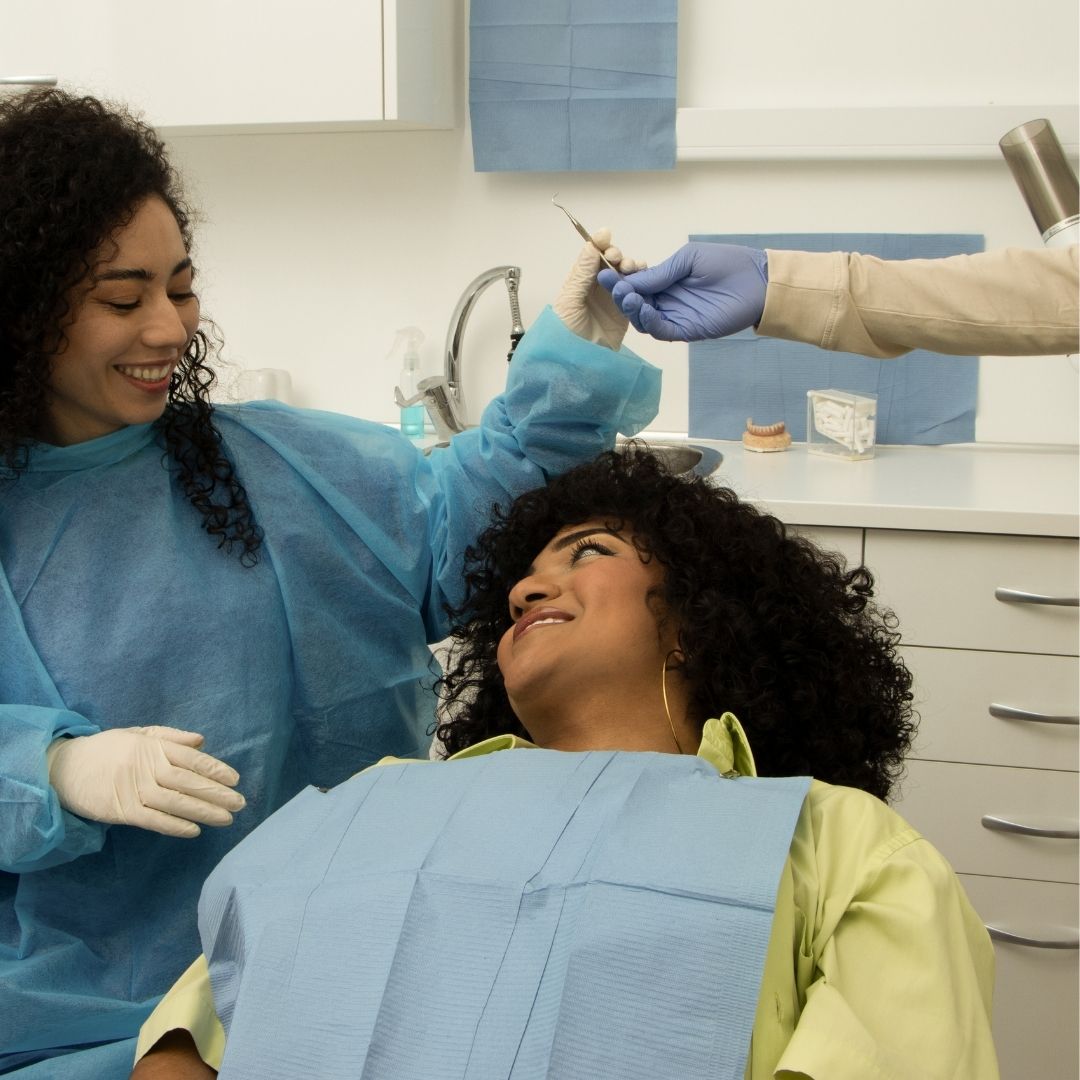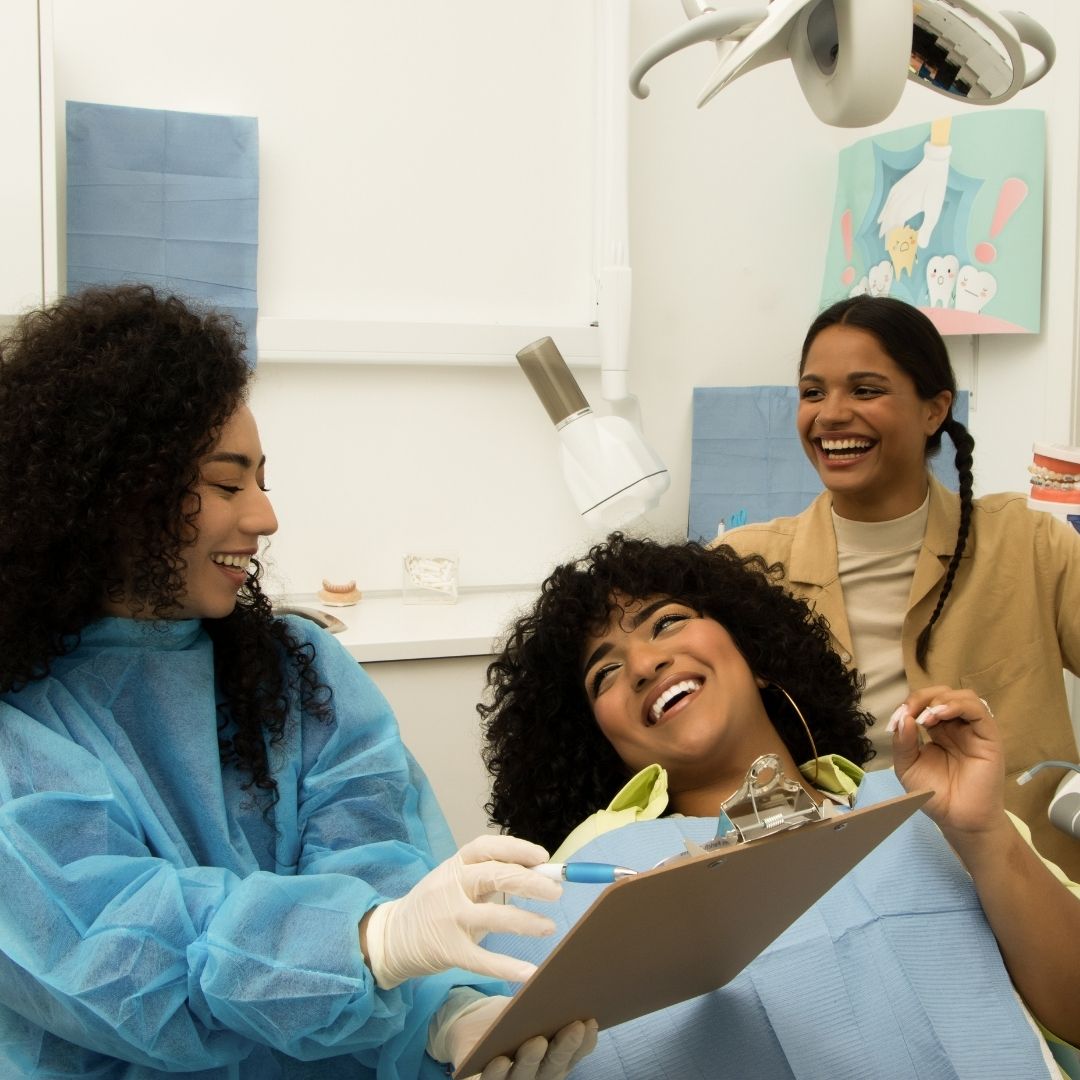
Visiting the dentist for the first time can feel daunting, especially if you’re unsure about what the experience entails. Whether you’re a child, an adult who hasn’t seen a dentist in years, or someone new to a particular dental practice, understanding the process can ease anxiety and help you prepare. A first dental visit typically involves a combination of administrative tasks, a comprehensive examination, diagnostic procedures, and discussions about your oral health. This article provides a detailed overview of what to expect, offering insights to make your visit smooth and stress-free.
Before the Appointment
Scheduling and Preparation
Your first dental visit begins before you even step into the office. When scheduling the appointment, the dental office will likely ask for basic information such as your name, contact details, and insurance information (if applicable). Some practices may send you forms to fill out in advance, either online or via email. These forms typically include your medical history, dental history, and any current symptoms or concerns. Completing these forms accurately is crucial, as certain medical conditions (e.g., diabetes, heart disease) or medications can impact dental care.
It’s a good idea to prepare a list of questions or concerns about your oral health. Are you experiencing tooth sensitivity, gum discomfort, or cosmetic issues like stained teeth? Noting these down ensures you address them during the visit. If you’re nervous, consider calling the office to ask about their approach to patient comfort, such as sedation options or calming techniques.
What to Bring
On the day of your appointment, bring the following:
-
A valid ID.
-
Insurance card or payment method if you’re paying out-of-pocket.
-
A list of current medications and medical conditions.
-
Any previous dental records, if available (especially if you’re transferring from another dentist).
-
A parent or guardian if the patient is a minor.
Arrive 10–15 minutes early to complete any remaining paperwork and settle into the environment.
Checking In at the Dental Office
Upon arrival, you’ll check in at the reception desk. The staff will verify your information and may ask you to confirm or update details like your address or insurance. First-time patients often spend a few minutes in the waiting area, which is typically designed to be welcoming, with magazines, TVs, or even toys for children. Some offices offer refreshments like water or coffee.
If it’s your first time at this practice, the staff may give you a brief overview of the office, including where the restrooms are or what to expect during the visit. This is also a good time to inform them of any specific anxieties, such as fear of needles or dental tools, so they can tailor the experience to your comfort level.
Meeting the Dental Team
Your first interaction will likely be with a dental assistant or hygienist, who will guide you to the examination room. The dental team typically includes:
-
Dentist: The primary provider who diagnoses and treats oral health issues.
-
Dental Hygienist: A professional who cleans teeth and educates patients on oral hygiene.
-
Dental Assistant: Assists the dentist during procedures and may take X-rays.
-
Office Staff: Manages appointments, billing, and patient records.
The team will introduce themselves, and the dentist may briefly discuss your dental history or reasons for the visit. Building a rapport with the team is important, as trust and communication enhance the quality of care.
The Comprehensive Examination
The core of your first dental visit is the comprehensive examination, which assesses your overall oral health. This typically includes several components:
1. Review of Medical and Dental History
The dentist or hygienist will review the forms you filled out, asking follow-up questions about your health. They’ll want to know about:
-
Past dental treatments (e.g., fillings, root canals).
-
Current or past oral health issues (e.g., cavities, gum disease).
-
Lifestyle factors like smoking, diet, or teeth grinding.
-
Any allergies or sensitivities, especially to anesthesia or latex.
This information helps the dentist tailor their approach to your needs and avoid complications.
2. Oral Examination
The dentist will perform a thorough visual and physical examination of your mouth, including:
-
Teeth: Checking for cavities, cracks, chips, or wear.
-
Gums: Assessing for signs of gingivitis or periodontal disease, such as redness, swelling, or bleeding.
-
Soft Tissues: Examining the tongue, cheeks, and throat for abnormalities, including signs of oral cancer.
-
Bite and Jaw: Evaluating your bite alignment and jaw function for issues like TMJ disorders.
The dentist may use a small mirror and a probe to inspect hard-to-see areas. They’ll also check for plaque and tartar buildup, which can contribute to tooth decay or gum disease.
3. Diagnostic Tests
To get a complete picture of your oral health, the dentist may recommend diagnostic tests, such as:
-
X-rays: These images reveal issues not visible to the naked eye, like cavities between teeth, tooth root problems, or bone loss. Common types include bitewing X-rays (for cavities) and panoramic X-rays (for overall jaw and tooth structure). If you’re concerned about radiation, modern digital X-rays use minimal exposure.
-
Intraoral Photos: Some offices use a small camera to take detailed pictures of your teeth and gums.
-
Gum Measurements: The hygienist may use a periodontal probe to measure the depth of spaces between your teeth and gums, checking for signs of gum disease.
These tests are generally quick and non-invasive, though you may need to bite down on a plastic holder for X-rays.
4. Professional Cleaning
Most first visits include a professional cleaning, typically performed by a dental hygienist. The cleaning process involves:
-
Scaling: Removing plaque and tartar from tooth surfaces and along the gumline using specialized tools.
-
Polishing: Smoothing the teeth with a gritty toothpaste and a rotating brush to remove surface stains.
-
Flossing: Cleaning between teeth to remove debris and check for bleeding gums.
The cleaning may cause mild discomfort, especially if your gums are sensitive or you have significant tartar buildup. If you’re anxious, let the hygienist know—they can adjust their technique or offer breaks.
Discussion and Treatment Planning
After the examination and cleaning, the dentist will discuss their findings. They’ll explain:
-
The current state of your oral health.
-
Any issues detected, such as cavities, gum disease, or misalignment.
-
Recommended treatments, which could range from fillings to orthodontic referrals.
-
Preventive measures, like improving your brushing technique or using a fluoride rinse.
If no immediate issues are found, the dentist will emphasize maintenance, recommending regular cleanings (every 6–12 months) and good at-home care. If treatment is needed, they’ll outline options, costs, and timelines. For example:
-
Minor Issues: Cavities may require fillings, typically done in a single visit.
-
Moderate Issues: Early gum disease might need deep cleaning (scaling and root planing).
-
Complex Issues: Problems like impacted wisdom teeth or severe misalignment may require referrals to specialists, such as oral surgeons or orthodontists.
The dentist will also answer any questions you prepared. This is a good time to discuss cosmetic concerns (e.g., whitening) or practical issues (e.g., mouthguards for sports).
Addressing Dental Anxiety
If you’re nervous, the dental team is trained to help. Common strategies include:
-
Explaining each step before it happens.
-
Offering distractions like music or TV.
-
Using nitrous oxide (laughing gas) or other sedation options for anxious patients.
-
Allowing breaks during procedures.
Communicating your fears openly allows the team to create a more comfortable experience. Some offices even offer virtual tours or pre-visit consultations to ease first-time jitters.
Post-Visit Expectations
After your appointment, you may receive:
-
A summary of findings and treatment recommendations.
-
Instructions for at-home care, such as brushing twice daily, flossing, or using a specific mouthwash.
-
A follow-up appointment for treatments or routine cleanings.
You might experience mild gum sensitivity or soreness, especially if you had a deep cleaning. This typically subsides within a day or two. If you notice persistent pain, bleeding, or other issues, contact the office promptly.
Tips for a Successful First Visit
-
Be Honest: Share your medical history, symptoms, and concerns fully.
-
Ask Questions: Clarify anything you don’t understand about procedures or costs.
-
Follow Instructions: Adhere to pre- and post-visit guidelines, like fasting before sedation (if applicable).
-
Stay Relaxed: Practice deep breathing or bring a stress-relief item, like a fidget toy.
-
Plan Ahead: Schedule your next visit before leaving to maintain consistent care.
Why the First Visit Matters
Your first dental visit sets the foundation for your oral health journey. It’s an opportunity to establish a relationship with your dentist, address immediate concerns, and create a plan for long-term care. Regular dental visits can prevent minor issues from becoming major problems, saving you time, money, and discomfort in the future. According to the American Dental Association, consistent dental care reduces the risk of cavities, gum disease, and even systemic health issues linked to poor oral health, like heart disease.
By knowing what to expect, you can approach your first dental visit with confidence. The process is designed to be thorough yet approachable, ensuring your comfort and health are prioritized. Whether it’s a routine checkup or the start of a treatment plan, this visit is a proactive step toward a healthier smile.






